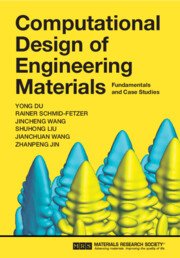Chemical Synthesis of Advanced Ceramic Materials
Devoted to the role of chemical synthetic techniques in the development of advanced ceramic materials, this is the first book to bridge the gap between existing volumes concerned with properties of ceramic materials, such as mechanical properties, and those on chemistry. The author describes the variety of advanced ceramics and their conventional synthesis and fabrication. This is followed by a description of the range of nonconventional synthetic methods. The basic chemistry of the synthesis is described and well illustrated by reference to ceramics made on both laboratory and industrial scales.
Reviews & endorsements
"...it is a pleasure to recommend it." Times Higher Education Supplement
"This is a good topical book, it presents a good review of recent work and would appeal to anyone with an interest in the chemical synthesis and physical properties of advanced ceramic materials." Chemistry in Britain
"...bridges the gap between existing volumes dealing with the properties of ceramic materials and those on chemistry." Chemical Engineering Progress
"...a suitable undergraduate text or an overview for those entering the field of ceramics." Steven L. Suib, Journal of Solid Chemistry
"...a clear overview of a wide scope of ceramic materials and will be especially useful in classes on this aspect of material science as well as for a fast introduction to this field of research." Y. Haruvy and S. E. Webber, Journal of the American Chemical Society
"...a very useful, well-written text, which can be read in a few hours...We recommend it to anyone interested in learning the basics about the recent techniques developed to synthesize submicron powders for ceramic processing." Marc A. Anderson & Walter A. Zeltner, Ceramic Abstracts
Product details
May 2012Adobe eBook Reader
9781139242516
0 pages
0kg
This ISBN is for an eBook version which is distributed on our behalf by a third party.
Table of Contents
- 1. Introduction: the variety of ceramic systems
- 2. Conventional routes to ceramics
- 3. Ceramic fabrication
- 4. Sol-gel processing of colloids
- 5. Sol-gel processing of metal-organic compounds
- 6. Non-aqueous liquid phase reactions
- 7. Polymer pyrolysis
- 8. Hydrothermal synthesis of ceramic powders
- 9. Gas phase reactions
- 10. Miscellaneous synthetic routes to ceramic materials
- Appendix
- List of symbols
- Index.




